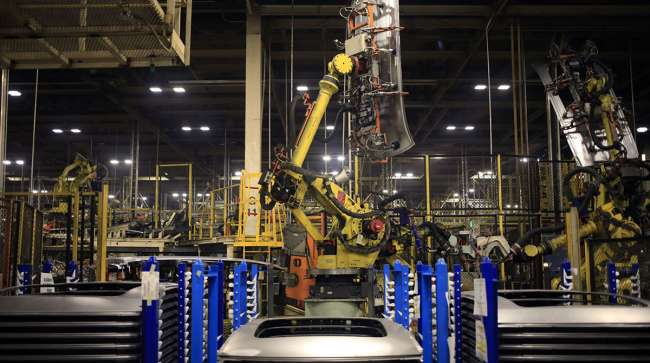Factory Production Declines on Weaker Equipment Demand

[Stay on top of transportation news: Get TTNews in your inbox.]
Production at U.S. factories fell in March for the first time this year as companies show signs of ratcheting back investment plans.
The 0.5% drop in output last month followed an upwardly revised 0.6% increase in February, according to Federal Reserve data released April 14. Including mining and utilities, total industrial production climbed 0.4% in March.
The median forecast in a Bloomberg survey of economists called for manufacturing production to decline 0.1% and for total output to rise 0.2%.
The drop in factory output was driven by a pullback in production of durable goods, such as wood products and nonmetallic minerals. Output of consumer durable goods, including automobiles and appliances, slid 0.9%.
.@business: @ISM #Manufacturing PMI® numbers “suggest rising interest rates, growing recession fears and tighter lending conditions may be starting to weigh on business investment … compounding demand challenges the sector already faced.” https://t.co/shAjrjm1HU #ISMPMI #economy — Institute for Supply Management (@ism) April 3, 2023
Factory output is down 1.1% from a year ago and the outlook for manufacturing is cloudy as higher borrowing costs risk upending capital spending plans and thwarting consumer spending on big-ticket merchandise.
By market group, production of business equipment dropped 1%, the most this year, while output of consumer goods increased on clothing and energy.
In three of the four months through February, bookings for core capital goods have declined, according to separate government data.
Earlier this month, an Institute for Supply Management survey of manufacturers showed activity contracted by the most since May 2020, reflecting in part declining orders.
Want more news? Listen to today's daily briefing above or go here for more info
Looking forward, the inflationary environment that’s plagued manufacturing appears to be easing. U.S. producer prices fell in March by the most since the start of the pandemic, driven by a decline in gasoline costs.
The Fed’s report showed capacity utilization at factories, a measure of potential output being used that can correlate with inflation pressures, decreased to 78.1%.
Utility output jumped 8.4% as a return to more seasonal weather boosted demand for heating, while mining declined 0.5%.
— With assistance from Chris Middleton.



